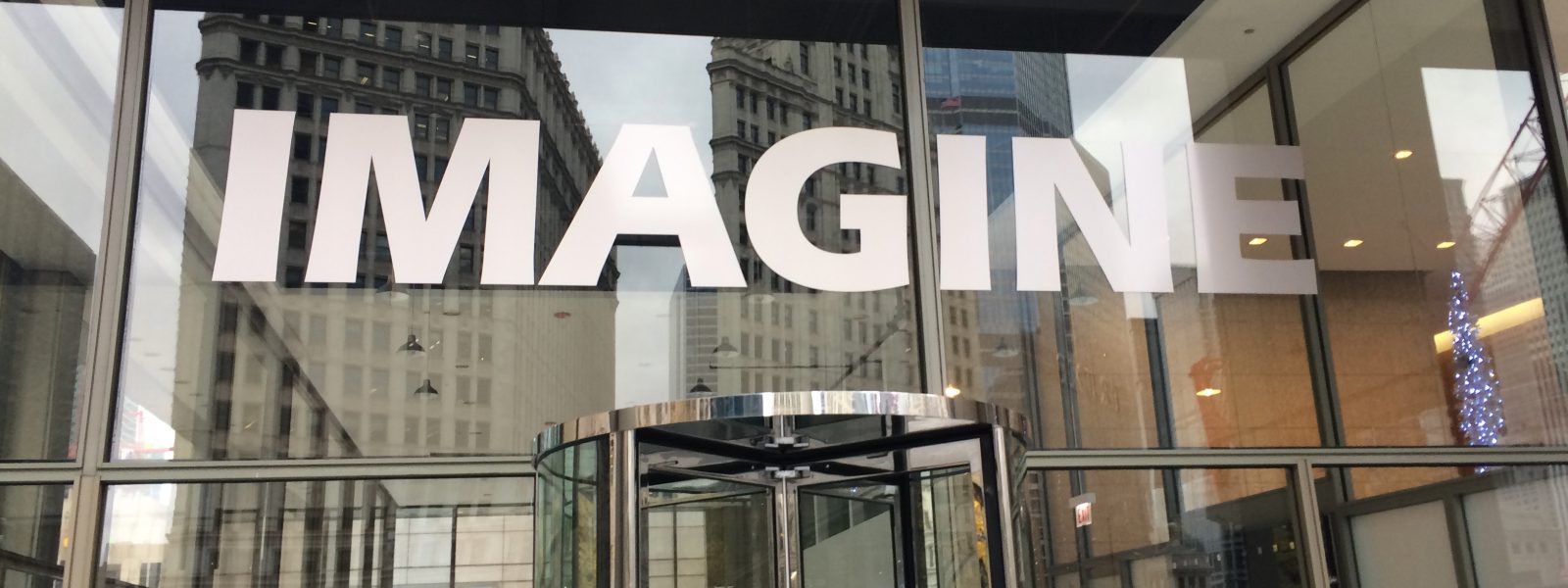
Influenced by primary research with global workers and participation in agile methods across the software and marketing professions, I’ve come to define it as follows:
An agile career is a self reflective, incremental career path, guided by response to change, evolving job roles, and designed to optimize creativity, growth, and happiness.
—Marti Konstant
Sounds appealing, doesn’t it? We all strive for growth and happiness in our life’s work. But reaching the potential of an agile career requires us to redefine our very understanding of a “career” and the role we play within it.
When studying career agility, I observed the shared traits of the nimble employee and flexible entrepreneur. These self-directed individuals operate in multiple lanes, not single lane careers. They show an uncanny ability to adapt to setbacks and uncertainty. They are, like synonyms of “agile,” buoyant, energetic, limber, lively, quick, rapid, and sharp.
Welcome to the Age of Career Agility
It’s not the strongest of the species that survive, nor the most intelligent, but the one most responsive to change. —Charles Darwin
Well, there has been some debate regarding Charles Darwin’s exact quote. Yet, the spirit of his perspective is clear:
Adapt or get left behind.
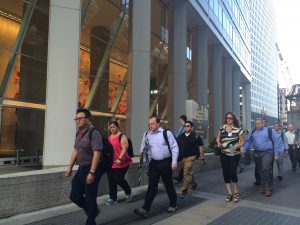
In today’s work setting, the concept of agility is everywhere. You can see it in a variety of situations including agile thinking, agile marketing, agile software development, leadership agility, learning agility, and many more.
Being agile means anticipating what’s ahead, monitoring trends, and moving forward.
Characteristics of agile careerists include: buoyant, energetic, limber, lively, quick, rapid, and sharp. Most important, agile thinkers respond to change with action and movement.
Who doesn’t want to be a part of this select group of relevant and in-demand professionals?
The Agile Mindset and the World of Work
With the launch of the Agile Careerist Project (a side project while working full-time), I explored agility for the past few years, as it applies in the workplace and individual career development. I have worked in agile software development environments and helped create and build momentum for the agile marketing movement.
Having worked with agile software developers in my marketing roles, I recognized the elegant structure and efficiencies of agile methods. I jumped at the chance to be part of a team of global marketers who created a set of values and principles with the agile marketing manifesto, launching the agile marketing movement.
During this two-day meeting in 2012, I pondered the question; why not apply agile thinking to career development?
Using curiosity as my guide, I conducted 120 cross-generational research interviews. Wanting to know more, I collaborated with a research team to administer a worker survey. We wanted to know why some people anticipate their next moves, while others remain steadfast in their work roles. We learned how individuals respond to change and how they make career navigation decisions.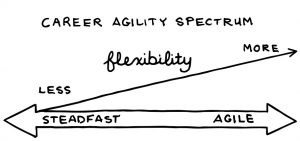
We discovered people fall on a spectrum, ranging between a steadfast careerist and an agile careerist.
My own career represents an adventurous narrative full of detours and unexpected turns.
These observations revealed some common truths, and convinced me the future of work demands an agile mindset.
Organizations and individuals who adopt the principles of career agility enjoy a distinct competitive advantage, and reach promising new heights. This philosophy is the foundation of the Agile Careerist
Project and career agility.
Seven Career Agility Principles
Agile careerists follow seven key principles within the Career Agility Model. The steps are not organized in any particular order, making it easy to start with something that resonates with you. The career agility model provides a handy visual as you review the principles below.
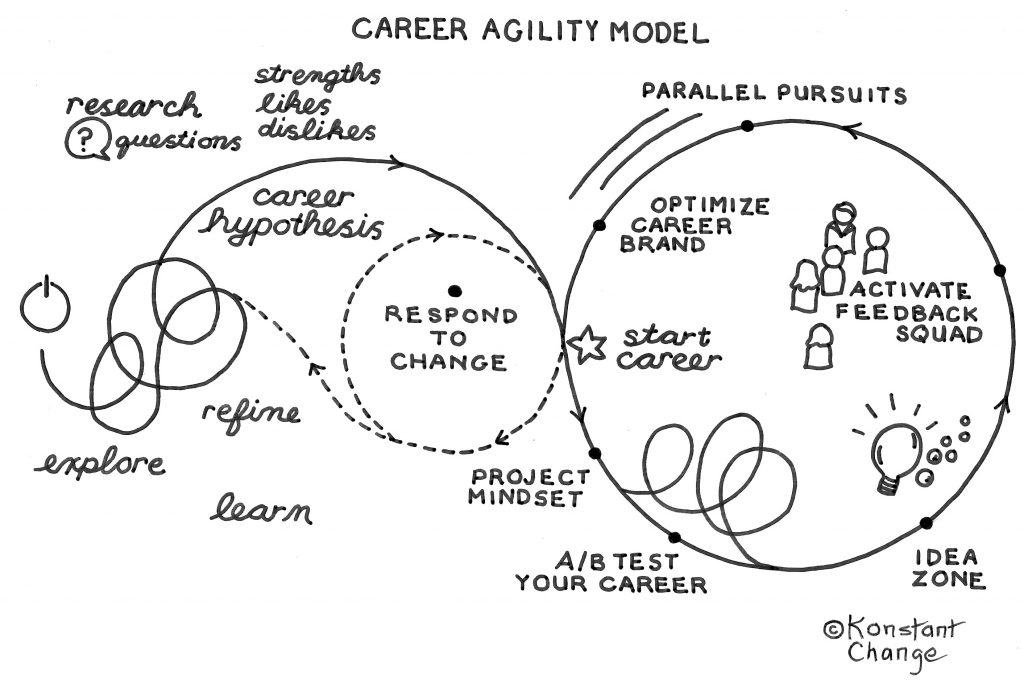
1. Create an Idea Zone
Take a cue from software engineers. Develop an idea backlog or buffer zone for future use, like they do for software releases. Save the pixie dust of your creative genius by writing it down or creating a digital document for a rainy day when you are out of ideas, yet still want to make progress.
2. Pursue it in Parallel
Pursue side gigs, freelance work, consulting assignments, education, or hobbies by pursuing activities in parallel. Create pathways for creative thought, extra income, or future job opportunities.
3. A/B Test Your Career
Test your interest and aptitude as you say, “Which do I like better, Job A or B?” Move to Job C or go back to a role similar to Job A, depending on your track record or inclination. Give yourself permission to explore as you discover the best fit for you and your talents.
4. Respond to Change
Acceleration of technology and continuous state of change calls for flexibility and willingness to adapt. Lean into change and make adjustments to your career status, rather than sticking to a rigid plan. Acclimate to economic developments and corporate adjustments by uncovering engaging projects. Discover market and employment gaps you can fulfill in a unique manner.
5. Optimize Your Personal Brand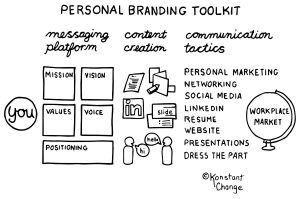
Uncover your distinguishing characteristics or brand values. Package your portfolio of skills and be consistent in how you communicate and present yourself to the human workplace. Ask yourself, “Am I in alignment with my brand values?” Spread the story-driven message in real life and across your digital networks. Be bold and dare to be different.
6. Activate the Feedback Squad
No one can do it alone. Seek the advice of people you most respect: mentors, trusted friends, and savvy colleagues. Hire a career coach. Learn from others via online channels. Pay it forward; be part of a feedback squad for a friend or coworker.
6. Think of Your Career as a Series of Projects
Think of your work as evolving job roles. Consider two- to three-year projects capable of building on your incremental knowledge. Harness the enthusiasm of a fresh start, master the job, and build new competencies. Become the most eligible employee for promotion or the best candidate at another company, or launch your personal startup project.
With this idea, Seth Godin, an author, entrepreneur, marketer, and public speaker was at the forefront of launching personal projects as a career plan. In his blog post, Thirty Years of Projects, his series of projects form an impressive collection of twenty books, business ventures, employee experiences, and online learning platforms.
Think of your career as a series of projects #agilecareer #careeragility Share on XThe business world is changing. There is a fundamental shift in what a career is – and what it can be. Like the artful business traveller skillfully navigating his way to an upgrade or a more optimal flight option, an agile mindset can be a distinctive advantage in the dynamic world of work.
Are you ready? Let’s do this!
Subscribe to Marti’s 52 Ideas, and don’t get left behind.
